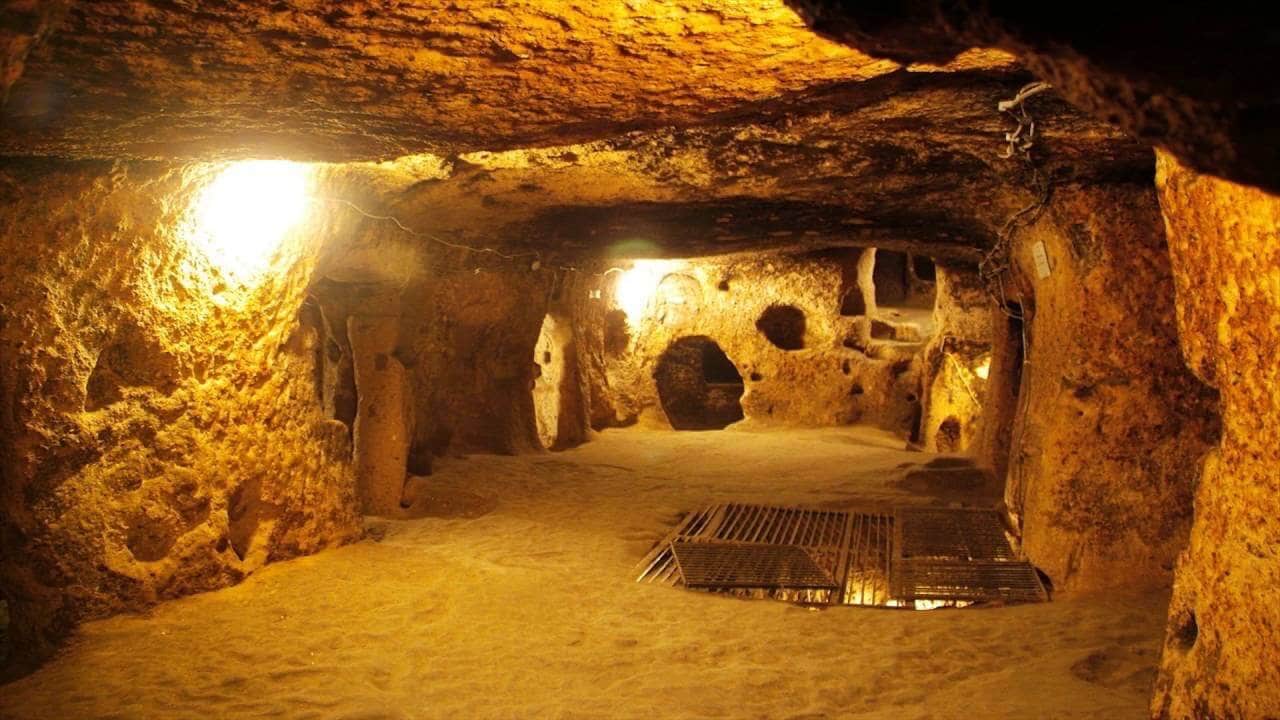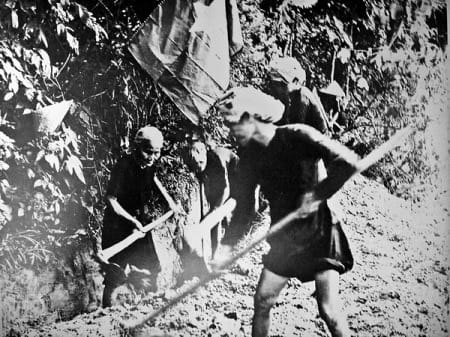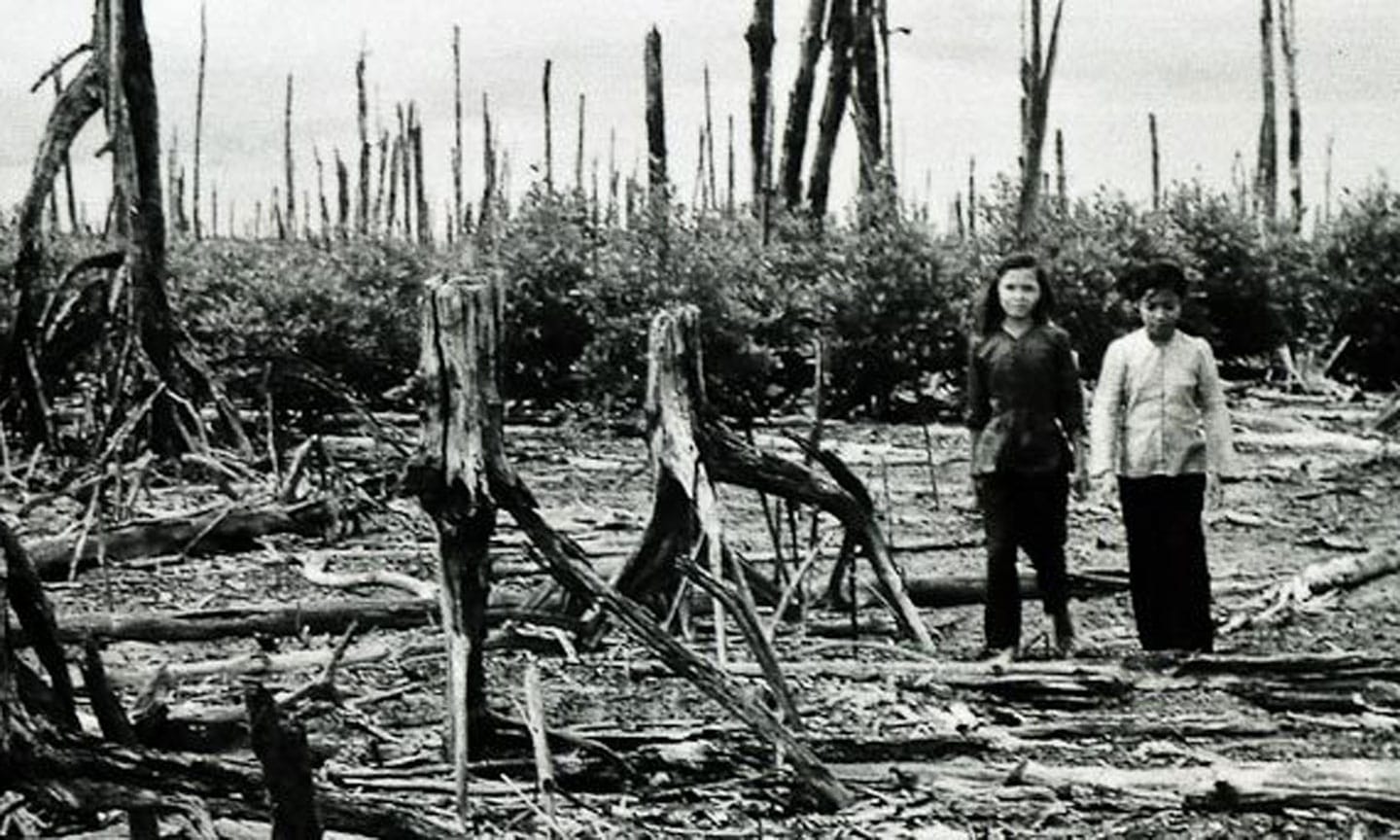Having withstood two intense wars, the Cu Chi tunnels have become a captivating historical destination for visitors. These tunnels were not only a formidable line of defense but also a crucial site for weapon production, hiding, and strategic planning, playing a vital role in the resilience of the Vietnamese army and people throughout nearly 30 years of conflict.
Join us at Joy Journeys as we explore The Impact of the Vietnam War on Cu Chi, from its historical significance to its enduring legacy today.
Contents
Historical Context of the Cu Chi Tunnels
Early Stages: Anti-French Resistance
The Cu Chi Tunnels are an extensive network of tunnels that were hand-dug using rudimentary tools, beginning in 1946 during the Indochina War.
Initially, these tunnels were short and simple, built by the people and soldiers of Tan Phu Trung and Phuoc Vinh An communes.
Their primary purpose was to provide shelter, store documents and weapons, and serve as a hiding place from French military raids.

The tunnels were originally dug by each village independently, but as the need for safe movement between the villages and communes grew, they were connected to form a vast and complex underground network.
Over time, the tunnel system expanded to include multiple locations, playing a critical role in the anti-French resistance and setting the stage for the tunnels’ later significance during the Vietnam War.
Expanding the Network: Preparing for the American War
During the anti-American resistance war, the enemy launched relentless sweeps and fierce attacks on the revolutionary forces in Cu Chi. In response to these persistent assaults, the Saigon – Cho Lon – Gia Dinh Regional Party Committee and the Cu Chi District Party Committee led the people and armed forces in defending their homeland, fighting to repel and destroy the enemy.
During this period, the Vietnamese army and local residents continued to expand and connect their hidden shelters. Using only rudimentary tools, such as hoes and bamboo shovels, the people and soldiers of Cu Chi embarked on an extraordinary effort, creating a vast network of tunnels stretching hundreds of kilometers. This underground network linked various hamlets together, forming an intricate “underground city”.

The Impact of the War on Cu Chi
War always brings profound and lasting consequences, and the effort to heal and rebuild takes time and immense resilience. Below is a look at the Impact of the Vietnam War on Cu Chi.
Civilian Casualties and Displacement
After the brutal conflict, Cu Chi was home to 13 heroic communes, 28 armed forces heroes, 715 heroic Vietnamese mothers, and 1,800 individuals who were honored with the title of “brave soldier.” Tragically, 10,000 men and women sacrificed their lives to protect the peace and freedom of their country.
Environmental Degradation
The natural environment of Cu Chi also suffered immensely during the war. Over the course of 30 years of conflict, the region was hit by approximately 500,000 tons of bombs, causing extensive damage. A total of 28,421 houses were destroyed, and 20,000 hectares of fields and forests were wiped out.
Furthermore, the widespread use of Agent Orange, a toxic defoliant sprayed by the U.S. military, caused severe environmental and health impacts. An estimated 4.8 million people were exposed to the dioxin in Agent Orange. In Cu Chi alone, more than 830 families have been affected, but only 332 victims have been officially recognized and received compensation for their suffering.

Planning Your Visit to the Cu Chi Tunnels
The Cu Chi Tunnels are a fascinating historical destination that attracts both international and domestic tourists.
Getting There and What to Expect
Located in Cu Chi District, about 70 kilometers northwest of Ho Chi Minh City’s center, the tunnels are accessible through various transportation options:
- Bus: While there is no direct route from central Saigon to the Cu Chi Tunnels, you can take bus number 94 from Cho Lon bus station to Cu Chi bus station, then transfer to bus number 79 to reach your destination.
- Motorbike: Renting or using your own motorbike offers flexibility and the opportunity to enjoy the scenic route to Cu Chi.
- Taxi or Van: For groups, booking a taxi or van ensures a comfortable and private journey with enough space for everyone.
- Tours: Numerous organized tours depart from Ho Chi Minh City, offering convenience and the benefit of a knowledgeable guide to enhance your understanding of the site. This option saves time on planning and provides a richer experience.
Making the Most of Your Visit
To ensure a meaningful and enjoyable trip, here are some tips to help you make the most of your visit to the Cu Chi Tunnels:
- Pack Appropriately: Opt for lightweight, sporty clothing to stay comfortable during a day of outdoor activities. Don’t forget to bring hats and jackets to protect your skin from the sun.
- Stay Hydrated: The hot and dry weather in Vietnam can be challenging, especially for visitors from cooler climates. Carry a bottle of filtered water to avoid dehydration and fatigue.
- Maintain a Respectful Attitude: The Cu Chi Tunnels hold immense historical and spiritual significance for the Vietnamese people. Approach your visit with politeness and respect to better understand their history and have a more enriching experience.
- Choose a Reputable Tour Operator: If you’re joining a tour, take time to research and select a trusted operator to avoid scams or overly commercialized experiences. Key factors to consider include the company’s licensing, customer reviews, and the professionalism of their staff.

For a convenient and in-depth exploration, consider booking a tour with Joy Journeys. Our experienced guides provide insightful and memorable experiences tailored to your interests. Contact Joy Journeys via website at joyjourneys.com.vn or through WhatsApp at +84 (0) 868.17.66.79 for a journey you won’t forget.
Impact of the Vietnam War on Cu Chi Frequently Asked Questions
What was the Cu Chi in the Vietnam War?
The Cu Chi Tunnels were a 250-kilometer-long, three-level underground defense system constructed during the Indochina War and the War against the U.S. for national salvation. This intricate network played a crucial role in Vietnam’s resistance, serving as a base for operations, shelter, and supply movement.
What impact did the Ho Chi Minh Trail have on the Vietnam War?
The Ho Chi Minh Trail played a pivotal role in Vietnam’s victory, serving as a crucial strategic supply route that connected Vietnam, Laos, and Cambodia in their unified resistance. For 16 years (1959–1975) during the Vietnam War, this vital logistics network delivered troops, weapons, equipment, and essential supplies to support the Liberation Army of South Vietnam on the battlefield.
What advantage did the Cu Chi give the Viet Cong?
The Cu Chi tunnels provided the Viet Cong with several strategic advantages during the Vietnam War. They allowed for evasion of detection and bombings, with narrow and low passages dug during the monsoon season. The tunnels served as hidden routes for moving supplies and troops, and the Viet Cong also recycled American weaponry to trade for food and repair materials.
They facilitated secure communication, surprise attacks, and included living spaces, kitchens, hospitals, and command centers. The tunnels offered protection for civilians during bombing raids and were used for smuggling weapons and supplies from North Vietnam.
How did the Cu Chi tunnel not collapse?
The Cu Chi tunnels remained intact during the war due to their strategic construction in a clay-laterite area, a soil type known for its durability and stability. The tunnels were built deep underground, allowing them to withstand the destructive force of even the largest bombs deployed by the U.S. military.
Airflow was maintained through strategically placed ventilation holes, ensuring a livable environment for those inside. Additionally, different sections of the tunnels could be sealed off when necessary, providing added protection and flexibility during combat.
Conclusion
The impact of the Vietnam War on Cu Chi serves as a powerful reminder of the resilience and determination of the Vietnamese people. The tunnels stand as a testament to their ingenuity, sacrifice, and unwavering spirit during one of the most challenging periods in the nation’s history. Remembering the past is vital, not only to honor those who fought and suffered but also to learn valuable lessons that guide us toward a more peaceful future.


Related Posts
Saigon’s “Flower Market Replica”: Where To Find Them
Ho Chi Minh City’s floral charm is not limited to its bustling wholesale markets. Imagine wandering through a place where vibrant petals, fragrant blooms, and the spirit of traditional Vietnamese markets come alive—without the overwhelming crowds. A flower market replica captures that magic, blending the beauty of fresh flowers with the charm of a curated, […]
Is it Safe to Travel to Vietnam Right Now? A Complete 2025 Guide
Vietnam has emerged as one of Southeast Asia’s most captivating destinations, drawing millions of visitors annually with its rich culture, stunning landscapes, and incredible cuisine. However, many travelers still ask: Is it safe to travel to Vietnam right now? This comprehensive guide provides you with everything you need to know about Vietnam travel safety in […]
Ho Chi Minh Cu Chi Tunnels Tour: The Ultimate Guide
The Cu Chi Tunnels stand as one of Vietnam’s most remarkable historical sites, offering visitors a profound glimpse into the ingenuity and resilience displayed during the Vietnam War. For travelers, a Ho Chi Minh Cu Chi tunnels tour represents an essential experience that combines education, adventure, and deep cultural understanding. This comprehensive guide will help […]